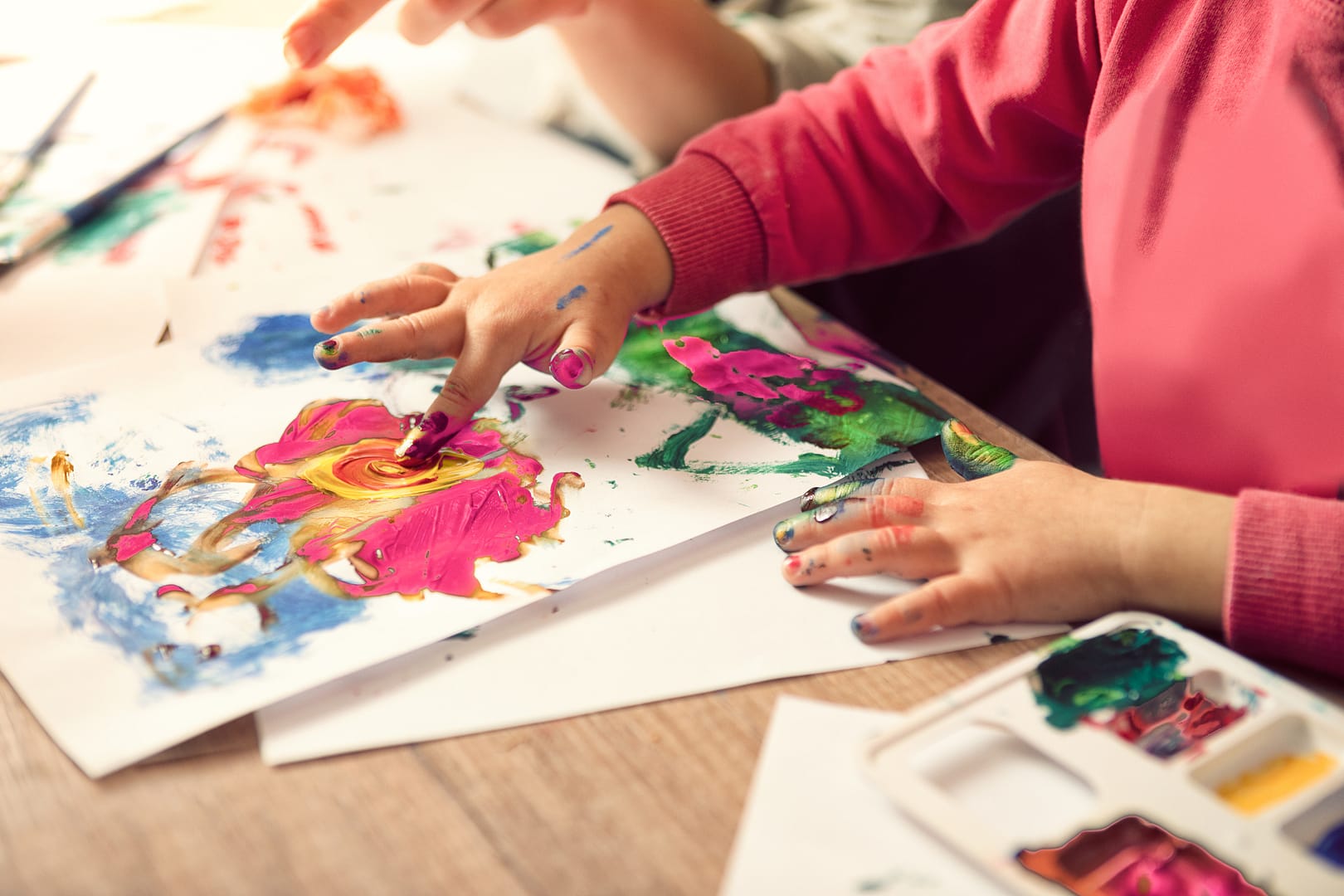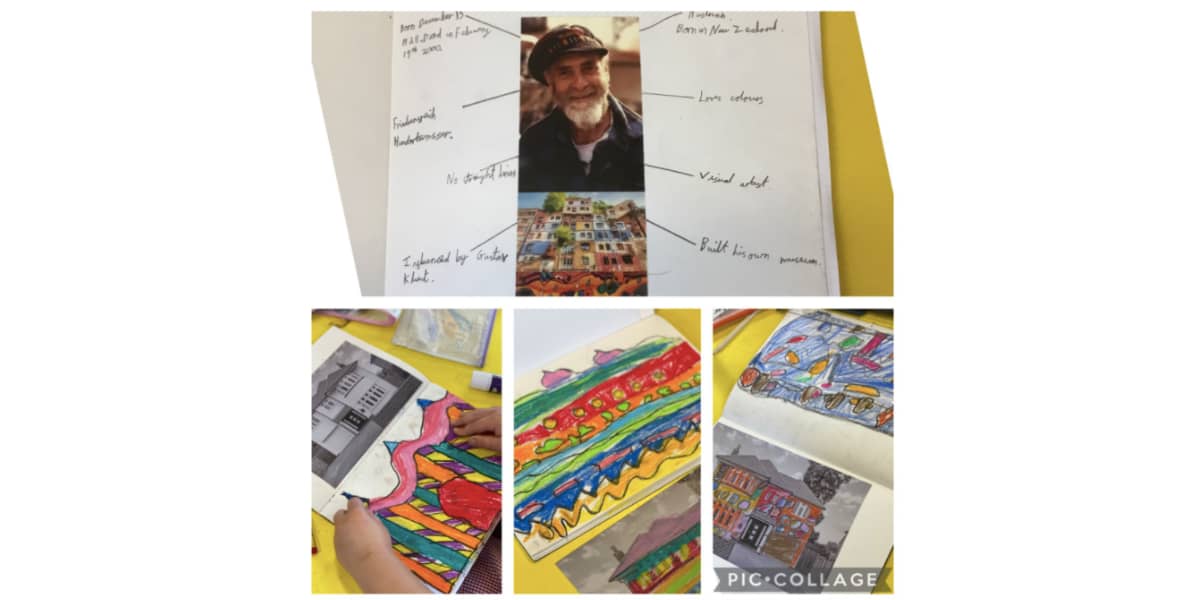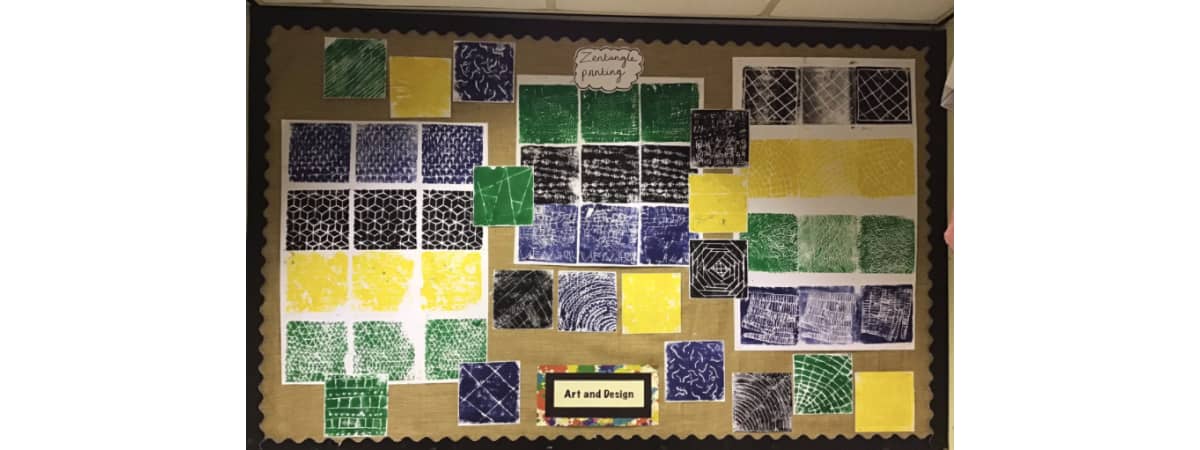Increasing Confidence: Barton Moss’s Journey To Prioritising Art & Design
Published 9 May 2023 by Kapow Primary
Published 9 May 2023 by Kapow Primary

If you’re struggling to prioritise art in your curriculum and finding it challenging to implement, read this inspiring case study from Barton Moss Primary School.
The school faced similar challenges until they discovered Kapow Primary. With our comprehensive curriculum, teacher videos, and accessible units, teachers gained confidence and planning became much easier.
Find out how art became a loved subject for Barton Moss, and how you can achieve the same success in your classroom.
Barton Moss is a school located in a disadvantaged urban area that serves a local council estate facing high levels of deprivation. Approximately 54% of its children are pupil premium. The school employs nine teachers to educate a total of 208 pupils.
One of the key goals at Barton Moss is for pupils to acquire and retain knowledge. This is accomplished by selecting important concepts to store in their long-term memories and teaching vital skills for their future lives and careers beyond school.
The school aims to provide a broad, balanced, challenging, and engaging curriculum. Additionally, the school works to ensure that teachers have manageable workloads while still achieving the best possible outcomes for pupils.
What subject(s) do you have with us?
Art and design, Design and technology, Music, Computing, RSE & PSHE, History and Geography.
What problems did your teaching staff have that Kapow Primary has solved?
I’ve been teaching at Barton Moss for 14 years and have been the Art lead for a long time. Previously Art wasn’t prioritised in school because the focus was on English and Maths due to the pressures the children faced. After we got English and Maths to a really good place, we started looking at the foundation subjects.
I arranged a staff questionnaire and discovered that some teachers at the school lacked confidence with art. We then created our own curriculum, which matched other topic areas but didn’t work in practice.
Someone suggested Kapow Primary, so we gave it a try. I trialled it in my class, and as it happened, we had Ofsted during that time – I explained the journey we had been on and our future plans – the inspector was really impressed with our honesty. They really liked the Kapow Primary information. We then rolled it out across the school.
Where did you find out about us?
Our head teacher at the time knew someone who had used it. They suggested we look into it, and we haven’t looked back!
Why did you choose the subjects you are subscribed to?
Art was such a success in the first year. We saw the massive impact it had in terms of the positivity of the teachers and in our pupil voice. We then tried Design and technology to the same results – and just kept adding more!
What appealed to you the most?
The main selling point was the teacher videos. Simply because of the huge amount of subject knowledge you need as a primary teacher. They have really been invaluable in supporting our teachers to gain confidence in art.
Teacher video from our Year 3: Craft and design unit.
How easy was Kapow Primary to implement?
Really easy. The biggest issue was around resourcing. It is an ambitious, varied curriculum so it was a bit of a problem at the start to make sure we had everything we needed, but other than that it just rolled out really easily.
What goals did you want to achieve using Kapow Primary?
We wanted art to be taught every week in every class, which wasn’t always happening previously. We also wanted to see progression throughout the school, and bringing Kapow Primary means we can see that. We had a teaching and learning audit last year and they chose the subject as a deep dive. I was asked to talk through the progression of Painting from EYFS to Y6, and I could get out the Kapow Primary progression document and really clearly display this. It was wonderful to have the confidence to really be able to demonstrate how effective our curriculum now is across the school.
My main goal was that I wanted our teachers to be confident teaching art and this to impact on the children’s learning. I also wanted to hear this impact through pupil voice, which we certainly did. Children love art at Barton Moss.
What do you think is the most helpful thing about Kapow Primary?
The teacher videos are fantastic for CPD for our teachers. Our CPD schedule is so packed with everything else, having it integrated into the lessons is just fantastic. Also, the range of art that we are covering. It is great to hear the children talk about the different types of art – and picking up sketchbooks to look at the outcomes is just wonderful!

Example of work from Year 5: Craft and design: Architecture.
What impact has Kapow Primary Art and design had on teaching and learning?
Planning is much easier for the teachers because everything is comprehensive and there. We do edit the plans occasionally to allow for the Covid-gap, but they are a great starting point and have definitely reduced teacher workload. The last data we captured in Autumn last year showed every single class was above 80% expected, or more, for the arts and four classes were 90% or higher. So data shows us that we picked the right scheme.
How accessible are the units, considering the existing level of pupil knowledge and skill when you first implemented the scheme?
We’ve had to support some classes because we’ve found that drawing skills are weak across the board – particularly following Covid, because the children are arriving with lower motor skills or missed previous lessons. But it’s been easy to do that – teachers can look at the lesson to check the children have the skills and adapt the lessons accordingly.
Based on the teacher guidance and video provided, can you describe how easy or difficult teachers found it to deliver the units?
We’ve not had any problems with any of the units. The teachers really love the information, videos and planning that is all there to help them. We can tell it’s working because of the outcomes the children are producing.
If we didn’t have the videos and just picked up one of the learning objectives, I think the teachers would be wondering how to teach it – but the videos really enable them to do so because they have all the support they need.
What has been your pupils’ favourite unit/lesson?
I have been collecting this information from pupil voice. Year 6 loved the Zentangle patterns – we’re still doing the original scheme, but migrating to the new one in September. Year 4 loved the printing and making their own stamps and the play-dough printing. Year 2 have really enjoyed the Damien Hirst skulls. Year 3 has loved the prehistoric art and it has linked beautifully with their history topic.

Example of work from our Original scheme Year 6: Art and design skills.
Can you describe your experience of assessing Art and design for your class using the Kapow Primary materials?
When Kapow Primary assessment spreadsheets came out, we used those for assessment. They helped me, as a subject leader, to find areas we need to improve. I have written an action plan for next year based on the gaps we found using these spreadsheets, which was how we identified that drawing needed work. This year we are migrating all Kapow Primary objectives onto our assessment tracker system to use the same system for all our subjects.
Does the scheme offer enough variety and diversity in the types and styles of art and the diversity of artists that it presents to engage your pupils and reflect and broaden their artistic understanding?
Yes, absolutely. It is incredibly diverse. I was looking just a few days ago at the range of artists that are covered – and it’s fantastic!
Do you regularly use our supporting materials, and if so, what have you found the most helpful?
The progression documents are really useful. When I’ve had meetings as a subject leader, it’s great to have these documents in front of me to support those discussions. If you are asked any questions about any areas, the information is really clear and easy to share.
I’ve also used the list of artists and the long-term plans to discuss the breadth and depth of coverage, plus the deep dive toolkit and the 3Is info when writing the policy for Art and design.
Have you ever had cause to contact us?
No, apart from sharing the artwork on Twitter!
Kapow Primary has transformed art at Barton Moss. We now have an exciting, creative and inspiring curriculum with clear skills progression across the school. We have confident teachers and children who love art!
This case study is with special thanks to Claire Morgan – Year 4 teacher, Art and design and English lead.